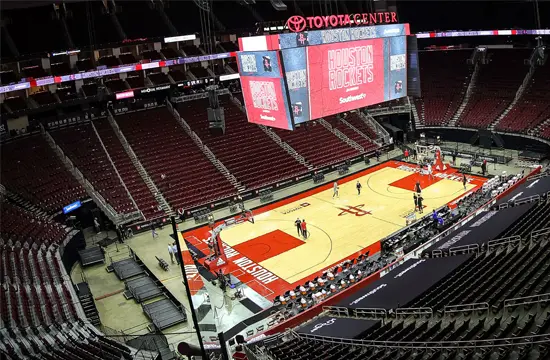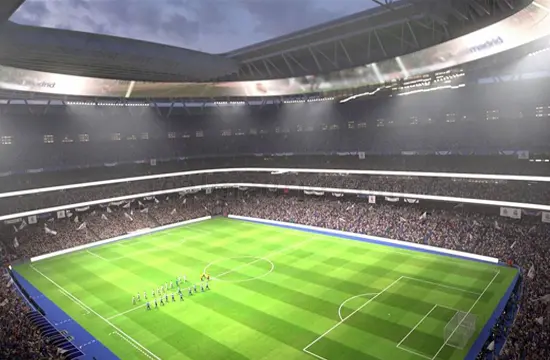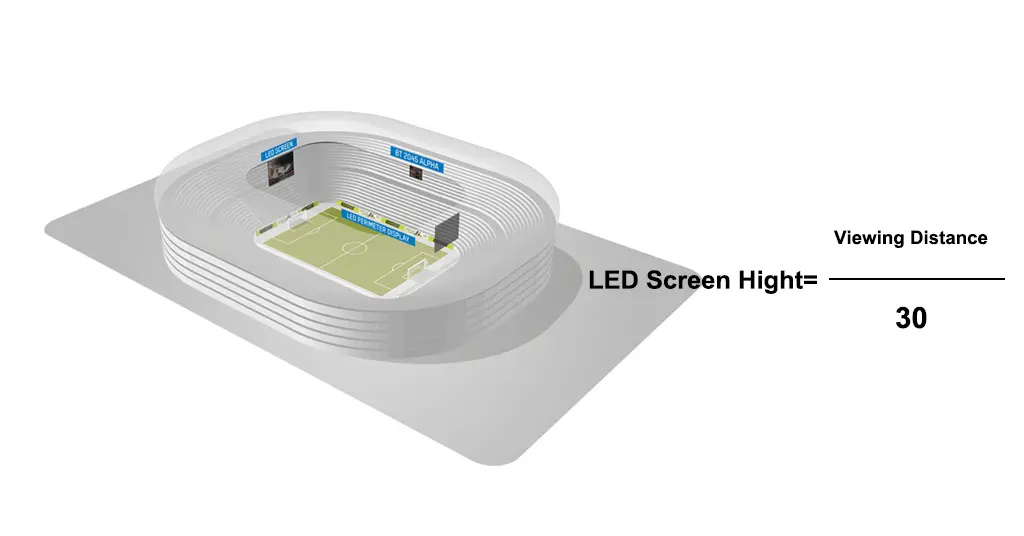How to Choose the Right Stadium LED Screen?
As an important part of the stadium audio visual solution, the choice of LED screen directly affects the experience of the audience and the income of the event operator.
The selection and procurement of stadium LED screens mainly involve the scale of the stadium, the viewing distance of the audience, the required resolution of the LED screen, the budget of the overall stadium AV solution, and the required functions of the stadium LED screen.
As a professional LED screen manufacturer and audio visual solution service provider, Galaxyav has a history of more than 20 years in this field. In this article, we will combine years of experience and professional technical knowledge to introduce how to choose the right stadium LED screen for you.
Table of Contents
Stadium size
There are significant differences in the size of different sports venues. Take the Houston Rockets’ home arena as an example. The arena covers an area of 4,700 square feet and can accommodate 18,300 spectators.
The Santiago Bernabéu Stadium, as the home stadium of Real Madrid, has a field area of 76,712 square feet and can accommodate 81,044 spectators to watch football matches at the same time.
Correspondingly, the Houston Rockets stadium uses 4 large LED displays with a total area of about 310 square meters. Real Madrid’s main stadium LED display is 3,700 square meters in size, which is one of the largest LED screens in Europe.
The size of the stadium is the most important factor in choosing a stadium LED screen. Only a large enough LED screen can allow spectators all over the stadium to clearly see the content of the game on the LED screen.


Viewing Distance
The viewing distance refers to the distance from the last row of seats to the LED screen. Different types of gymnasiums have completely different viewing distances. Take the Houston Rockets basketball stadium and Real Madrid football stadium above as examples. The viewing distance of the former is much smaller than that of the latter. The farther the viewing distance, the larger the LED screen size required.
As an expert in the LED screen field, Galaxyav often advises customers to choose the height of the LED screen as the viewing distance/30 in the stadium audio visual solution provided to customers
Assuming that the farthest viewing distance of a certain stadium is 100 meters, then when you purchase an LED screen, the minimum screen height of the LED screen is 100/30=3.3 meters.

Desired Resolution
The resolution of the Stadium LED screen refers to the number of pixels (light-emitting units) per unit area. The more the number, the higher the resolution, and the clearer the images and videos that the audience can see from the LED screen.
Unlike household LED screens, the pixel resolution of LED screens in stadiums is not very high. Usually it is only necessary for the audience to see the game situation and the wonderful game replay screen clearly. If it is just an ordinary scoreboard function, then use the lowest-end resolution LED screen.
Indoor gymnasiums and outdoor gymnasiums will also have differences in the required LED screen resolution. Usually, indoor gymnasiums will choose higher resolution LED screens than outdoor gymnasiums when purchasing LED screen resolutions.
Stadium's Budget
When choosing an LED screen for a gymnasium, the overall cost budget is a factor that needs to be carefully considered. Depending on the resolution, size, function and other factors of the LED screen, the price will range from several thousand dollars to several million dollars.
Also, it is obviously not possible for a stadium LED screen to run as a single device. Usually, it will be integrated with audio, lighting, signal transmission and other systems to form a complete audio-visual system integration project. Therefore, when choosing a stadium LED screen, it is necessary to fully consider the proportion of the cost of other systems in the total budget.
If you do not know professional knowledge in this area, senior technical engineers of Galaxyav are happy to provide you with a free stadium audio visual solution.
The early stadium LED screen was usually used as a scoreboard. With the development of the times, the stadium LED screen has been given more functions.
In order to allow the audience in the outdoor gymnasium to see the content on the LED screen clearly under strong light conditions, it is necessary to investigate the brightness function of the screen when purchasing an LED screen. Usually we recommend that you choose the brightness of the LED screen to be above 2500cd/㎡.
Viewing angle is also a factor that should be considered when purchasing a stadium LED screen. Usually, the seats in the stadium are arranged in a trapezoidal shape. In order to allow audiences in different positions to see the content of the LED screen clearly, you need to choose an LED screen with a larger viewing angle.
In addition, when choosing a stadium LED screen, you also need to consider durability and later maintenance costs, as well as the follow-up technical support of the stadium AV solution provider.
How to Choose the Right Stadium LED Screen is a very challenging job. It is necessary to comprehensively consider multiple factors such as the size of the stadium, the viewing distance of the audience, the resolution of the LED screen, the cost budget of the entire stadium av solution, and the function selection of the LED screen.
If you need to replace the stadium LED screen or want to know the price and equipment performance of our AV solution, please contact our engineers and we will give you a satisfactory answer.
Others also read the following article
Want to know more about the Audio Visual Solutions?
